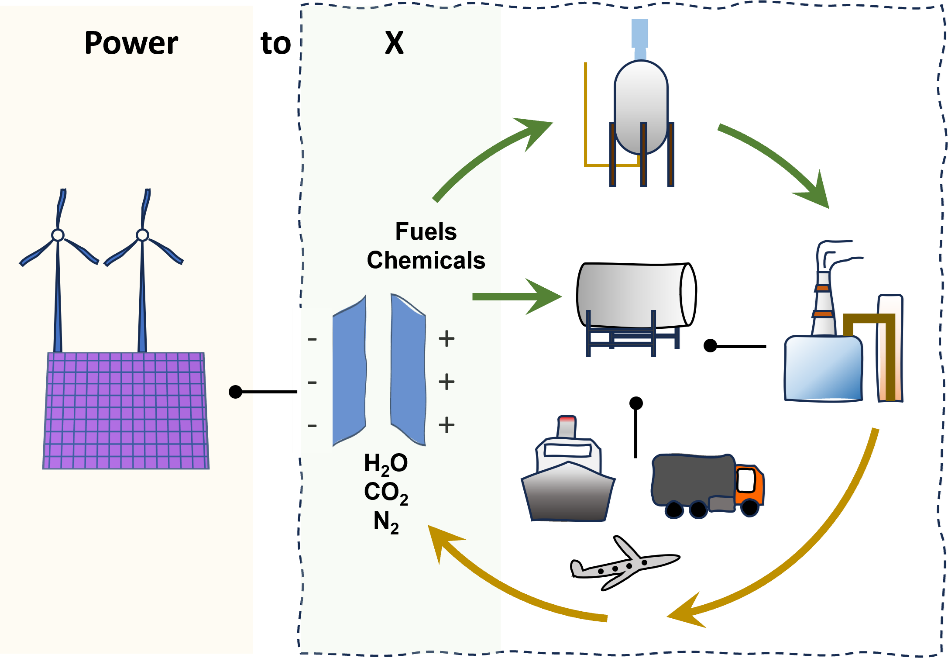Against the detractors of the renewable energy technologies due to their intermittency, there are alternatives to batteries that allow for surplus renewable energy to be stored for medium/long periods of time: Power-to-X (abbreviated as PtX, P2X, or PtG and PtL, with G or L from gas or liquid products).
P2X technologies rely on conversion of power (electricity) into gas or liquid fuels that can be further reconverted to power. This allows for decoupling the energy generation/use and supplying power to sectors that cannot be easily electrified (or rely on batteries) such as heavy transport and aircrafts.
Hydrogen is the paradigmatic example of these approach. Although currently most of the hydrogen is industrially generated from natural gas, the water electrolysis process to obtain hydrogen is a clear example of a PtG technology. Of course, only if we ensure that the electric power comes from renewables, it can be sustainable.
Beyond using water to produce hydrogen, we can also utilize CO2 (in combination with water, hydrogen or nitrogen) to obtain other potential products: from ammonia to synthetic aviation fuels, passing through methanol or others.

Depending on the source, with this CO2 being a major greenhouse gas, we have the potential to achieve net zero emissions! In fact, if we were able to capture and utilize the equivalent CO2 emissions of the super-rich 1%, estimated in an average of 3 million tonCO2eq per year, we would be able to achieve almost 2% of the global annual production of methanol. And not only fuels but also important chemicals can be produced. Ethylene, an important compound in the chemical industry used as plastic precursor, can be obtained through P2X with significantly lower emissions to current industrial process. It means that with only Taylor Swift’s equivalent CO2 emissions in 2022, we would be able to generate > 2.5 tonnes of ethylene, so imagine the potential!
The Catalonia Institute for Energy Research in collaboration with The University of Edinburgh are developing an electrochemical unit able to efficiently convert the CO2 coming from a direct air capture unit into ethylene. This unit can be powered by renewable electricity or directly utilize the solar energy through the coupling with a full spectrum solar collector designed by The University of Lleida.
Written by IREC